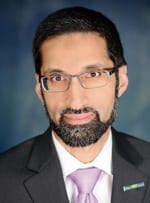Data shows new Omicron BA.2 variant not prevalent in Niagara
A new variant of the Omicron coronavirus has been prevalent in the news recently, but Niagara’s Acting Medical Officer of Health, Dr. Mustafa Hirji, is not sounding any alarms.
“We’ve seen it take off in some countries around the world, like Denmark and India,” said Hirji, “but not so much in Canada. There has been a bit of growth in BA.2 in Ontario, but it’s still pretty minor at under five percent, and in Niagara is trending at just over one percent. BA.2 probably does spread more easily than the BA.1 variant, but not so much that it's going to outcompete the BA.1 sub-lineage.”

Hirji credits Niagara’s high vaccination rate with keeping the virus in check, and stresses that greater immunity is provided with three doses, including a booster shot.
“It’s the impact of vaccination,” he said, “keeping people out of the intensive care unit, and preventing severe outcomes.”
New cases of infection are declining in Niagara, as are Covid-related hospitalizations and deaths. Pharmaceutical companies Pfizer and Moderna are both working on vaccines to specifically combat the Omicron virus and its sub-variants.
Public Health Ontario, in a risk assessment briefing on February 9, noted that evidence continues to demonstrate that three doses of a Covid-19 vaccine provide greater protection from Omicron variant infection compared to two doses, but the duration of protection from a third dose remains unclear. Omicron variants have been shown to cause less severe disease than the Delta variant, although Omicron infections can still be perilous in older age groups.
The current risk of Omicron transmission in Ontario is high, with a low degree of uncertainty, according to Public Health Ontario.
Most pandemic restrictions in the province, aside from use of masks indoors, were to be curtailed on March 1. Many doctors are cautioning against dropping mask mandates too soon, suggesting that masking represents a minor inconvenience that can substantially reduce viral transmission.
Close to 80 percent of Niagara’s population is fully vaccinated, and almost 60 percent of adults have received their booster shots. As of February 24, there were 1463 active cases of coronavirus infection in the region (239 in Pelham) with 87 persons hospitalized in the past 28 days. During the course of the pandemic, the deaths of 511 Niagara residents have been officially attributed to Covid.
The Ford government recently announced that effective March 13 Ontario would be eliminating license plate renewal fees and the requirement to have a licence plate sticker for most vehicles on provincial roadways. Hirji saw this as an opportunity to suggest another worthwhile financial break for overburdened taxpayers.
The Premier is giving a refund to people who pay for vehicle registration, and I thought that providing rebates of OHIP premiums would actually be a way to give money back to people
“The Premier is giving a refund to people who pay for vehicle registration, and I thought that providing rebates of OHIP premiums would actually be a way to give money back to people, and would probably do a lot more social good, and help us move out of the pandemic a bit more quickly,” said Hirji.
Hirji told the Voice that this is actually an idea he passed on to the province late summer last year, when vaccination rates were starting to plateau.
“There was a lot of talk at the time about starting vaccine mandates,” he said. “My argument was that before we go down the road of forced vaccinations, let's create more reasons for people to get vaccinated. I thought one really powerful incentive is that you give people a tax break. Everybody loves a tax break.”
Ontario Health Insurance Plan (OHIP) premiums help fund healthcare services in the province. The premium is usually deducted automatically from an employee’s pay, otherwise it is due when filing a personal income tax return. Those earning under $20,000 pay nothing towards the plan, while those earning more pay in increments. Those earning $35,000 have a $300 premium, while $45,000 earners pay $450, $70,000 earners $600, and $100,000 earners $750. High-income earners over $200,000 pay $900 OHIP premiums.
“Vaccinations are already linked to our OHIP numbers, so I expect it would be relatively easy to administer,” said Hirji. “It just makes logical sense in order to keep hospitalizations and the health burden down. So give people a reward, for having done their part for community health.”


